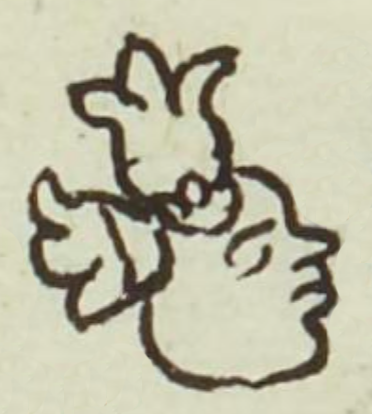Xochiteotl (MH526v)
This black-line drawing of the compound glyph for the personal name Xochiteotl (perhaps “Flower Divinity”) is attested here as a man’s name. It shows the head of a bald man with two flowers on his head. The flowers each have three petals and a stem. The man's eyes are closed, possibly suggesting that he is dead.
Stephanie Wood
The bald-headed figure here seems to stand for teotl, which can mean divine force, deity, or divinity. This is not how teotl appears in the Codex Mendoza of two decades earlier, where teotl is half of a sun sign. This shift toward anthropomorphizing the divine force may imply Christian influence. Perhaps given exposure to the deceased body of Christ on crucifixes and in paintings, and the instruction that Christ was god, has led to this new interpretation of teotl.
Stephanie Wood
pedro.xochiteotl.
Pedro Xochiteotl
Stephanie Wood
1560
flowers, flores, deidades, fuerzas divinas, espíritus, Jesús, Cristo, nombres de hombres

xochi(tl), flowers, https://nahuatl.wired-humanities.org/content/xochitl
teo(tl), a divine force, a deity, https://nahuatl.wired-humanities.org/content/teotl
"Flower-Deity" or "Sacred Flower" [H.B. Nicholson, in Mesoamerican Writing Systems, ed. Elizabeth P. Benson (1973), 28.]
posiblemente, Flor-Divinidad
Stephanie Wood
Matrícula de Huexotzinco, folio 526v, World Digital Library, https://www.loc.gov/resource/gdcwdl.wdl_15282/?sp=132&st=image.
This manuscript is hosted by the Library of Congress and the World Digital Library; used here with the Creative Commons, “Attribution-NonCommercial-ShareAlike 3.0 License” (CC-BY-NC-SAq 3.0).










